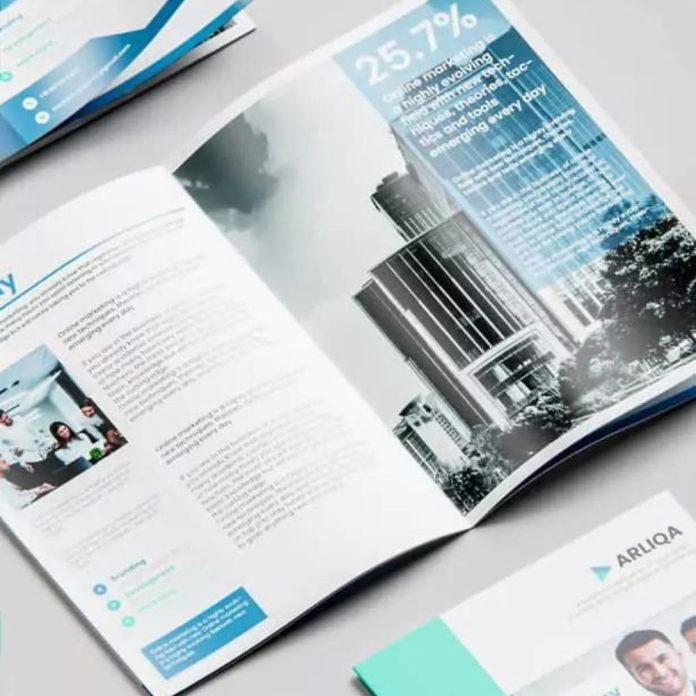In the realm of booklet printing, the choice between DIY (Do-It-Yourself) and professional services can be a critical decision for individuals and businesses alike. While both options offer distinct advantages and drawbacks, understanding when to opt for each can significantly impact the quality, cost-effectiveness, and overall success of your printing project. In this comprehensive guide, we’ll explore the key factors to consider when deciding between DIY booklet printing and professional booklet printing services.
Understanding the Difference of Booklet Printing
Before delving into the decision-making process, it’s essential to grasp the fundamental distinctions between DIY and professional booklet printing.
DIY Booklet Printing
DIY booklet printing involves creating and producing booklets independently using personal or office equipment. This approach typically requires access to a printer, paper, binding materials, and design software. DIY enthusiasts often embrace this method for its cost-effectiveness, creative control, and flexibility in small-scale projects.
Professional Booklet Printing Services
On the other hand, professional booklet printing services are offered by specialized printing companies equipped with advanced technology, expertise, and resources. These services provide a comprehensive solution for booklet production, from design consultation to printing, binding, and finishing. While professional printing may entail higher upfront costs, it offers superior quality, efficiency, and scalability for large-scale or complex projects.
Factors to Consider
When deciding between DIY and professional booklet printing, several factors merit careful consideration:
1. Project Scale and Complexity
The scale and complexity of your printing project play a pivotal role in determining the most suitable approach. DIY printing may suffice for small runs or simple designs, such as personal portfolios, event programs, or family newsletters. Conversely, projects requiring professional-grade quality, intricate designs, or large quantities are best entrusted to professional printing services.
2. Time and Resources
Consider the time, resources, and expertise available for your printing endeavor. DIY printing demands significant time investment in design creation, printing setup, and troubleshooting. Additionally, DIYers must possess adequate skills in graphic design, layout, and printing techniques to achieve satisfactory results. In contrast, professional printing services streamline the process, saving time and ensuring professional-quality outcomes without the need for specialized knowledge or equipment.
3. Budget Constraints
Budget considerations often influence the decision between DIY and professional printing. While DIY printing offers cost savings on equipment and labor, it may incur hidden expenses such as consumables, maintenance, and trial-and-error mistakes. Professional printing services provide transparent pricing models, economies of scale, and bulk discounts, making them a cost-effective option for large or recurring projects.
4. Quality Standards
Quality is paramount in booklet printing, as it reflects the credibility and professionalism of your brand or message. DIY printing may yield inconsistent results due to variations in equipment, paper stock, and printing techniques. Professional printing services guarantee superior quality through advanced machinery, skilled craftsmanship, and quality assurance processes. Whether you prioritize precision, color accuracy, or finishing options, professional printers can meet your exacting standards with precision and consistency.
5. Brand Image and Perception
Consider the impact of your printed materials on brand image and perception. Professionally printed booklets convey professionalism, credibility, and attention to detail, enhancing brand reputation and customer perception. In contrast, DIY booklets may appear amateurish or unpolished, potentially undermining brand trust and credibility, particularly in business or marketing contexts.
Decision-Making Strategies
To make an informed decision between DIY and professional booklet printing, follow these strategic guidelines:
1. Evaluate Project Requirements
Assess the specific requirements, objectives, and constraints of your printing project, including quantity, design complexity, budget, and timeline.
2. Compare Costs and Benefits
Conduct a cost-benefit analysis to compare the total cost of DIY printing (including equipment, materials, labor, and potential reprints) with the pricing of professional printing services. Consider the long-term value, quality assurance, and time savings offered by professional printers.
3. Consider Expertise and Skills
Honest self-assessment of your design and printing skills is crucial. If you possess the necessary expertise in graphic design, layout, and printing techniques, DIY printing may be a viable option for straightforward projects. However, if you lack the requisite skills or time to learn them, outsourcing to professional printers ensures professional-quality results without the learning curve.
4. Seek Samples and Recommendations
Request samples or portfolios from professional printing services to gauge the quality of their work and assess their suitability for your project. Additionally, seek recommendations from colleagues, peers, or industry experts who have experience with both DIY and professional printing to inform your decision.
5. Factor in Time Constraints
Consider your project timeline and deadlines when deciding between DIY and professional printing. DIY printing may require additional time for design iterations, troubleshooting, and production, potentially delaying project delivery. Professional printing services offer expedited turnaround times and reliable production schedules, ensuring timely delivery of your printed materials.
6. Prioritize Brand Integrity
Prioritize brand integrity and consistency in your decision-making process. Professional printing services uphold strict quality standards, ensuring consistent color reproduction, branding elements, and finishing options across all printed materials. This commitment to brand integrity enhances brand recognition, trust, and loyalty among your target audience.
7. Assess Long-Term Needs
Consider the long-term scalability and sustainability of your printing solution. While DIY printing may suffice for one-off or small-scale projects, professional printing services offer scalability, reliability, and consistency for ongoing or expanding printing needs. Factor in potential growth, reprints, or future projects when making your decision.
Conclusion
In the realm of booklet printing, the choice between DIY and professional services hinges on various factors, including project scale, budget, quality standards, expertise, and brand considerations. While DIY printing offers flexibility and cost savings for small-scale or simple projects, professional printing services provide superior quality, efficiency, and brand integrity for complex or large-scale endeavors.
Ultimately, the decision between DIY and professional booklet printing should align with your specific project requirements, objectives, and constraints. By carefully evaluating these factors and following strategic decision-making guidelines, you can make an informed choice that maximizes the effectiveness, efficiency, and impact of your printed materials.
